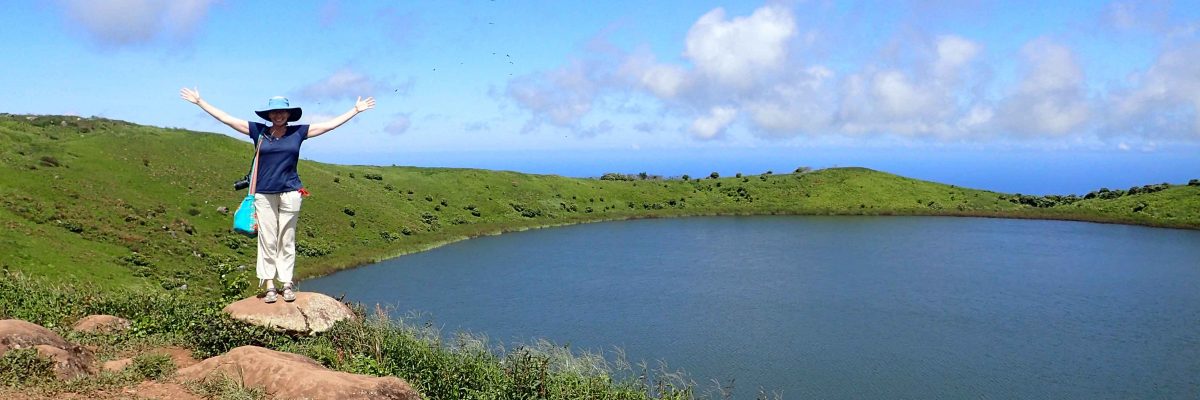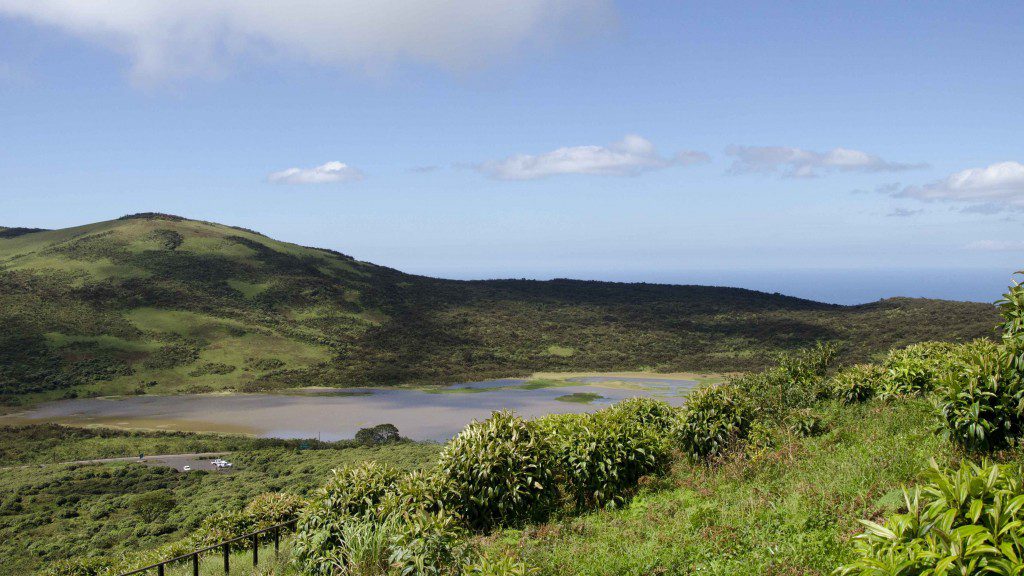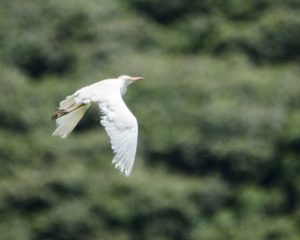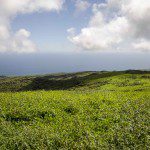 There is a single freshwater lake in the Galapagos, El Junco, and it can be seen on the island of San Cristobal. The lake was formed tens of thousands of years ago after the last ice age. Locals named it El Junco after a flowering plant that grows in the area, Eleocharis mutata. And although the large hillside looks nothing like a volcano, the lake itself is in an ancient crater, its volcanic history hidden by green pastures.
There is a single freshwater lake in the Galapagos, El Junco, and it can be seen on the island of San Cristobal. The lake was formed tens of thousands of years ago after the last ice age. Locals named it El Junco after a flowering plant that grows in the area, Eleocharis mutata. And although the large hillside looks nothing like a volcano, the lake itself is in an ancient crater, its volcanic history hidden by green pastures.
El Junco looks very small but it holds more than 360,000 cubic meters of water. That’s about 9 million gallons! That’s a lot of fresh water on the Galapagos. Many of the populated islands struggle to keep fresh water reserves. The majority of potable water comes from private desalination plants. Non-potable water can come from brackish sources where salt and freshwater are mixed or from local springs. On Isabella, the local aquifer is tapped via wells. One reason tourists are asked to conserve water while on the islands is that it is a non-renewable resource in many respects.
A visit to El Junco can mean just hiking from the parking lot to the top of the hill where there is an excellent view of El Junco on a clear day. Be warned, however, that this highland lake can be tough to see because of foggy weather. When the clouds clear, the views of both the lake and the surrounding area are some of the best on the island!
 The best visit includes hiking around the lake itself. It’s pretty small so the hike around isn’t long in distance. In fact, to hike from the parking lot around the lake and back again is approximately 2 kilometers. However, if it has been raining, especially during the months of January through April, be prepared for slow going. There will be mud and lots of it! We arrived after a short dry spell and still had a few slippery spots on the trail.
The best visit includes hiking around the lake itself. It’s pretty small so the hike around isn’t long in distance. In fact, to hike from the parking lot around the lake and back again is approximately 2 kilometers. However, if it has been raining, especially during the months of January through April, be prepared for slow going. There will be mud and lots of it! We arrived after a short dry spell and still had a few slippery spots on the trail.
The surrounding hillside is the perfect habitat for birds and on the day of our visit, we saw a large group of Cattle Egret hunting in the tall grass. Our arrival caused a flurry of activity and we managed to get a few shots as they flew down the hillside. We also watched Frigate Birds swoop down into the sweet water lake, scooping sustenance from the placid surface. Frigates don’t hunt but scavenge and the still waters of El Junco are easier to comb than the choppy waters of the nearby ocean. An early morning or late afternoon arrival should also mean many more birds, including a finch or two and maybe a Galapagos flycatcher near the lake itself.
- Cattle Egret, El Junco, San Cristobal, the Galapagos
- Frigate Birds, El Junco, San Cristobal, the Galapagos
Walking around the lake provides unique vistas of the island itself. It is possible to see the ocean in almost every direction. And from one high hillside, it is easy to make out Cerro Brujo in the distance. A nearby hillside is home to three windmills that are a new initiative to help provide sustainable electricity to the island. San Cristobal is trying to get ahead of the power curve.
- View towards Cerro Brujo from El Junco, San Cristobal, the Galapagos
- View towards Windmills from El Junco, San Cristobal, the Galapagos
- View out to Sea from El Junco, San Cristobal, the Galapagos
 El Junco is a common stop on a day tour that takes you from Puerto Baquerizo Moreno out to the Tortoise Hatchery on the other side of the island. Most folks make this trip by hiring a local taxi for the day. Depending on the hour, a stop at El Junco comes first thing on the way out or is the last stop on the way back. Ask your taxi driver about the weather patterns and he can help you decide which is the best chance to catch some good views. Like most highlands in the Galapagos, clouds tend to be fewer in the early morning but it is always best to ask a local for conditions of the moment. The Galapagos seems especially susceptible to extreme weather phenomenon like El Niño.
El Junco is a common stop on a day tour that takes you from Puerto Baquerizo Moreno out to the Tortoise Hatchery on the other side of the island. Most folks make this trip by hiring a local taxi for the day. Depending on the hour, a stop at El Junco comes first thing on the way out or is the last stop on the way back. Ask your taxi driver about the weather patterns and he can help you decide which is the best chance to catch some good views. Like most highlands in the Galapagos, clouds tend to be fewer in the early morning but it is always best to ask a local for conditions of the moment. The Galapagos seems especially susceptible to extreme weather phenomenon like El Niño.
[ready_google_map id=’57’]
Basic Info for El Junco:
- Entrance hours – Sunrise to Sunset
- Trail from the parking lot to the top is rocky in parts
- Parts of the wooden walkway are poorly maintained
- Be prepared for a muddy trail around the lake
- Bring water
- Bring protection from the sun
- Bring a rain layer




















0 Comments